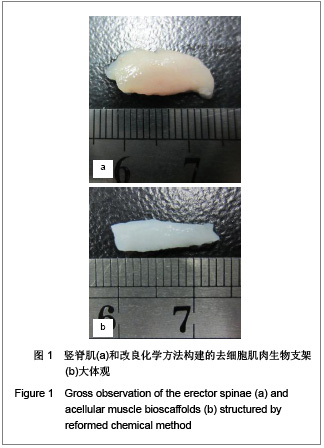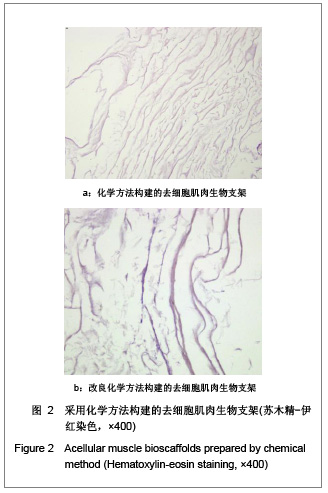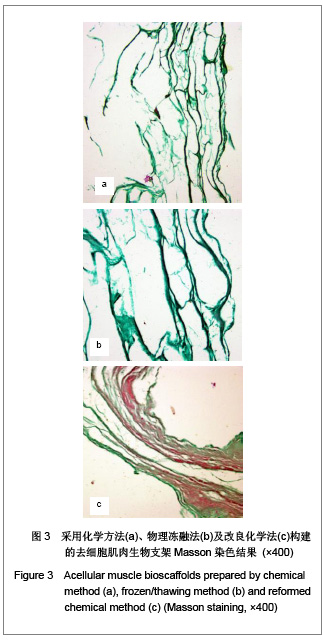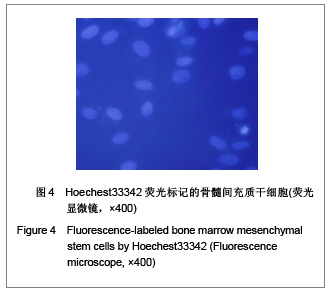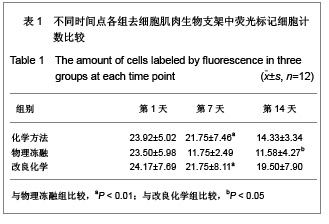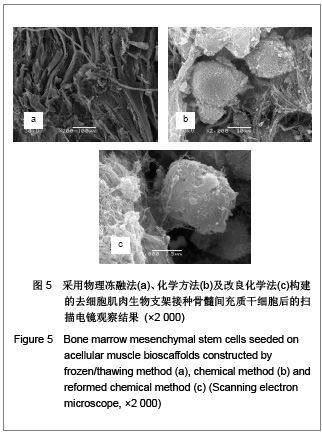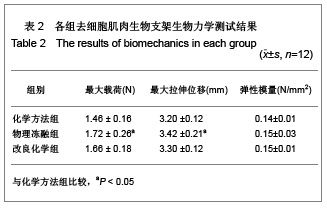中国组织工程研究 ›› 2013, Vol. 17 ›› Issue (3): 465-471.doi: 10.3969/j.issn.2095-4344.2013.03.014
• 材料力学及表面改性 material mechanics and surface modification • 上一篇 下一篇
三种方法构建去细胞肌肉生物支架:组织学和生物力学比较
魏祥科1,文益民2,张 涛1,李 含1
- 1兰州大学第二临床医学院,甘肃省兰州市 730018
2解放军兰州军区兰州总医院骨科中心,甘肃省兰州市 730050
Construction of acellular muscle bioscaffolds using three approaches: Histological and biomechanical comparison
Wei Xiang-ke1, Wen Yi-min2, Zhang Tao1, Li Han1
- 1 The Second Clinic College of Medicine of Lanzhou University, Lanzhou 730018, Gansu Province, China
2 Orthopedics Center, Lanzhou General Hospital of Lanzhou Military Region, Lanzhou 730050, Gansu Province, China
摘要:
背景:目前构建去细胞肌肉生物支架的方法有化学方法、物理冻融法和冷冻法。 目的:比较化学方法、物理冻融法和改良化学方法构建去细胞肌肉生物支架组织学和生物力学差异。 方法:将6只SD大鼠竖脊肌截成36段,随机分3组(n=12),分别采用化学方法、物理冻融方法、改良化学方法构建去细胞肌肉生物支架。将荧光标记的骨髓间充质干细胞接种于3组支架上进行组织学与生物力学检测。 结果与结论:苏木精-伊红染色显示3组支架均可见平行排列结构,化学方法组连续性较物理冻融组、改良化学组差;Masson染色显示3组支架结构主要为胶原纤维,物理冻融组残留一些肌纤维,间隙不均。物理冻融组第7天荧光标记种子细胞计数明显少于化学方法组、改良化学组(P < 0.01),第14天物理冻融组少于改良化学组(P < 0.05);扫描电镜可见细胞贴附各组支架生长、大量存活;物理冻融组最大载荷高于化学方法组(P < 0.05),与改良化学组无明显差别,各组弹性模量无差异;物理冻融组孔隙率低于化学方法组、改良化学组(P < 0.05)。表明改良化学方法可以兼顾支架的组织学和生物力学特性,彻底清除肌细胞,较多保留更完整的细胞外基质。
中图分类号:
